Introduction
Diethyl(phenylacetyl)malonate (new BMK oil; cas 20320-59-6) is an organic aromatic ester of malonic acid with the formula C15H18O5 and is an interesting compound in chemistry. This compound, with its unique molecular structure and chemical properties, has become a research target due to its versatility in synthetic research.
The diethyl(phenylacetyl)malonate cas 20320-59-6 molecule consists of a phenylacetyl aromatic ring and a malonate functional group. This affects the chemical interactions of the compound in different environments. In addition, the functionality of β-ketoester positions it as a basis for the creation of complex chemical structures.
This article describes the fundamental properties, methods of preparation and reactivity of diethyl(phenylacetyl)malonate. Its applications range from pharmaceutical intermediates to flavorings, agricultural and industrial applications, demonstrating the versatility and importance of this compound across a wide range. Finally, the health effects and safety precautions of handling this substance are described.
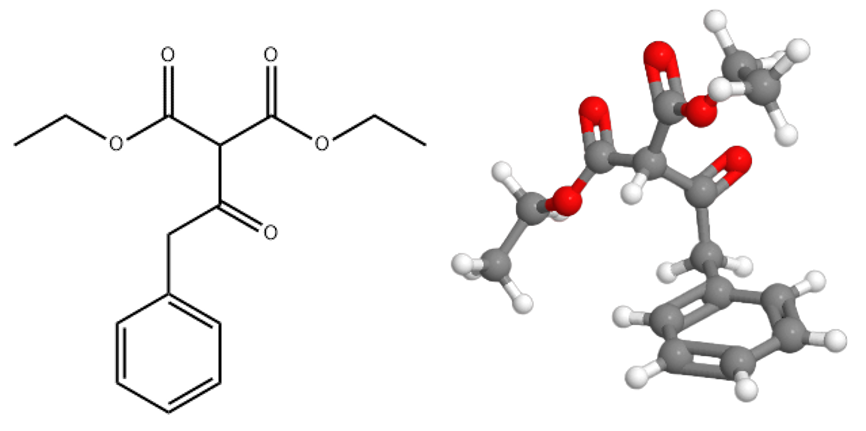
Physical and Chemical Properties of Diethyl Phenylacetyl Malonate
Diethyl(phenylacetyl)malonate cas 20320-59-6 (new BMK oil), is an organic compound with the chemical formula C15H18O5 and a molecular weight 278.3 g/mol. This is yellow-brown liquid. Its density is 1.148 g/cm3. It is very slightly soluble in water (0.923 mg/L) (25 ºC) and have a good solubility in organic solvents, such as ethanol, ether, and benzene. Diethyl(phenylacetyl)malonate is flammable, with flash point 154°C, and boiling point of about 120°C (0.01 Torr).
The chemical properties of diethyl(phenylacetyl)malonate are provided by the reactivity between the aromatic phenylacetyl moiety and the electrophilic malonate group. The acidity of diethyl(phenylacetyl)malonate, influenced by the malonate group, determines its behavior under reaction conditions, and it is also subject to hydrolysis.
Synthesis of Diethyl(phenylacetyl)malonate
The synthesis of diethyl(phenylacetyl)malonate involves a process using various reagents and reaction conditions. The following are general synthesis schemes; specific conditions may vary depending on the selected synthesis.
Anhydrous ethanol is added dropwise to the mixture of diethyl malonate and carbon tetrachloride. Anhydrous diethyl ether is then added, and diethyl phenylacetyl chloride solution is added slowly. After completion of the reaction, cool and add water, separate the oil layer, and evaporate the diethyl ether under reduced pressure to obtain diethyl(phenylacetyl)malonate.

Another method for preparing diethyl(phenylacetyl)malonate is by reacting ethanol and 2,2-dimethyl-5-(2-phenylacetyl)-1,3-dioxane-4,6-dione. This method is simpler, but it is difficult to obtain 2,2-dimethyl-5-(2-phenylacetyl)-1,3-dioxane-4,6-dione for this synthesis.
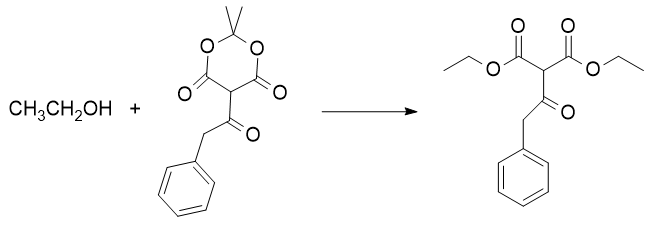

Chemical Reactions of Diethyl(phenylacetyl)malonate
Diethyl(phenylacetyl)malonate is involved in various chemical reactions. Here are some known chemical reactions that can occur:
Condensation: Phenylacetyl malonate can participate in condensation reactions to produce alkoxy pyrazoles. For example, it reacts with hydrazine hydrochloride to produce ethyl-3-ethoxy-5-benzyl-lh-pyrazole-4-carboxylate.

Hydrolysis: Under basic conditions, diethyl(phenylacetyl)malonate can undergo hydrolysis, breaking the ester bonds. As a result of this reaction, the corresponding dibasic acid and two alcohol molecules are formed.
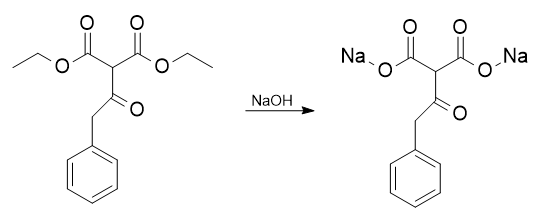
After this synthesis, phenylacetic acid and phenylacetone (p2p) can be synthesized from phenylacetyl malonic acid sodium salt, with using hydrochloric acid at a temperature of 60-65°C.
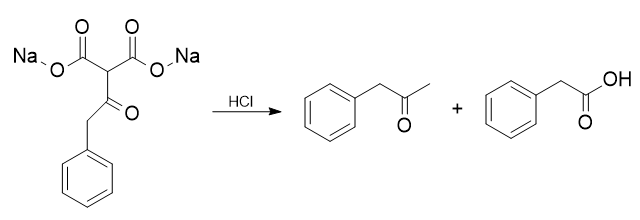
Applications of Diethyl Phenylacetyl Malonate
Diethyl(phenylacetyl)malonate is used in various fields. Here are some known use cases:
- Pharmaceutical chemistry: Diethyl(phenylacetyl)malonate is used as a precursor in the synthesis of pharmaceutical intermediates. The compound’s involvement in the synthesis of drugs and pharmaceuticals shows its importance in medicinal chemistry. For example, it is used to produce phenobarbital or derivatives of the phenylethylamine class.
- Agrochemical synthesis: Diethyl(phenylacetyl)malonate is used in the synthesis of agrochemicals. Researchers use its structure to introduce specific groups that improve the pesticide properties of the final products. Its ability to inhibit various enzymes and metabolic pathways in plants makes it an ideal component in herbicides and insecticides targeting specific pests and weeds. It is mainly used in intermediate synthesis.
- Production of dyes: Diethyl(phenylacetyl)malonate can be used in dye synthesis, mainly to produce violet dyes.
- Materials Science: Diethyl(phenylacetyl)malonate also finds application in materials science, where it is used as a precursor for the synthesis of nanomaterials. These materials have a wide range of applications, including electronic device development and catalysis.
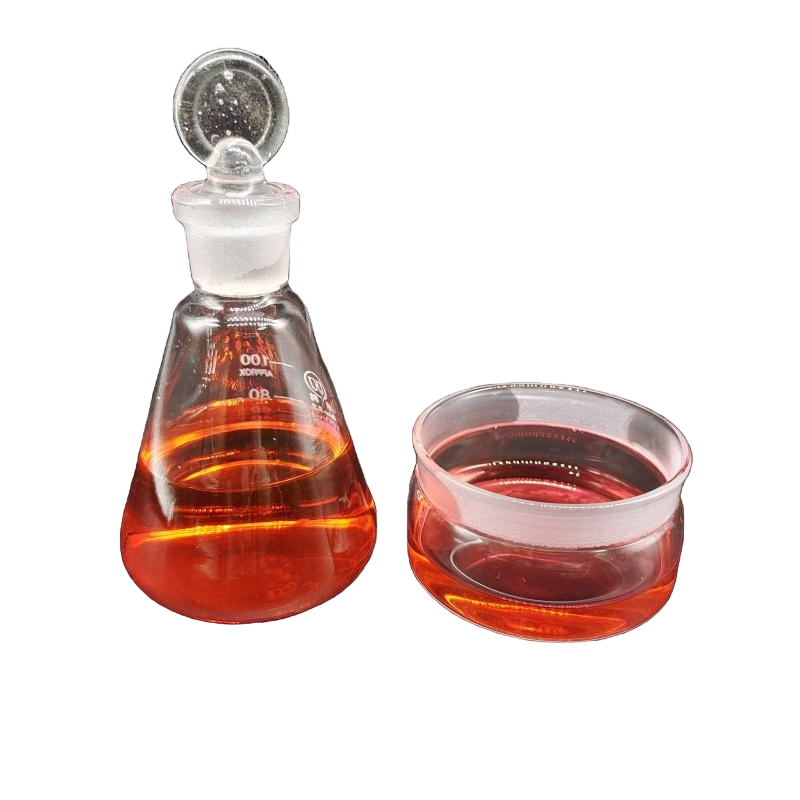
Health Effects of Diethyl(phenylacetyl)malonate
It is important to consider the health aspects associated with diethyl phenyl acetyl malonate when ensuring the safe handling and use of this compound. Knowledge about the health effects is important to establish appropriate safety precautions for persons involved in its synthesis, application, or research.
- 1. Toxicology: Diethyl(phenylacetyl)malonate, like many chemical compounds, has acute and chronic toxicity.
- 2. Inhalation: Inhalation of diethyl(phenylacetyl)malonate vapors or aerosols may pose a respiratory hazard. Preliminary studies indicate that long-term exposure to high concentrations may cause respiratory irritation.
- 3. Skin contact: Diethyl(phenylacetyl)malonate may cause skin irritation or sensitization upon direct contact. Protective clothing, including gloves, should be worn to minimize skin exposure.
- 4. Effect on the eyes: Exposure of the eyes to diethyl(phenylacetyl)malonate may cause irritation or damage.
- 5. Ingestion: Ingestion of diethyl(phenylacetyl)malonate may have adverse health effects.
In conclusion, although diethyl(phenylacetyl)malonate offers many possibilities in organic synthesis and various applications, a careful approach to health and safety is of paramount importance. Awareness of the potential health implications, coupled with the implementation of robust safety protocols, ensures that diethyl(phenylacetyl)malonate research remains innovative and safe as part of responsible chemical management practices.

Safety Precautions
Following safety precautions is fundamental to reducing the risks associated with the handling, synthesis and use of diethyl(phenylacetyl)malonate.
1. Personal protective equipment (PPE): The use of appropriate PPE is necessary when working with diethyl(phenylacetyl)malonateate. It includes:
- Gloves: Wear chemical resistant gloves to prevent skin contact.
- Eye protection: Use safety goggles or a face shield to protect your eyes from possible splashes or aerosols.
- Respiratory Protection: In environments where airborne exposure is possible, wear respiratory protection such as a properly fitted mask or respirator.
- Protective clothing: Wear lab coats or chemical-resistant clothing to cover exposed skin.
2. Ventilation: Provide ventilation in areas where diethyl(phenylacetyl)malonate is handled. Use fume hoods or work in well-ventilated areas to minimize inhalation exposure.
3. Handling and storage: Store diethyl(phenylacetyl)malonate in a cool, dry place, away from incompatible substances. Separate diethyl(phenylacetyl)malonate from strong acids, bases, and other reactive chemicals.
By following these precautions, you can reduce the risks associated with working with diethyl(phenylacetyl)malonate.
Conclusion
Diethyl(phenylacetyl)malonate has a unique molecular structure and the chemical properties and reactions in which it participates, as well as the varied applications it finds in various fields.
Diethyl(phenylacetyl)malonate combines phenyl, acetyl, and malonate groups, which explains its reactivity.
The reactions of diethyl(phenylacetyl)malonate offer many opportunities for organic synthesis, participation in the creation of intermediates in pharmaceuticals (for example, as a precursor to produce phenylacetone), dye chemistry and agrochemicals highlight the importance in the development of chemistry.
Bibliography
- 1-Phenyl-2-propanone (P2P) synthesis from Diethyl(phenylacetyl)malonate
Url: https://bbgate.com/threads/1-phenyl-2-propanone-p2p-synthesis-from-diethyl-phenylacetyl-malonate.1646/ - Alkyl Carbonates in Synthetic Chemistry. I. Condensation with Organic Esters. Synthesis of Malonic Esters V. H. Wallingford, August H. Homeyer David M. J. Am. Chem. Soc. 1941, 63, 8, 2056–2059, August 1, 1941 Jones https://doi.org/10.1021/ja01853a008
- Acylation through Ketene Intermediates Rimma Shelkov Moshe Nahmany, Artem Melman, J. Org. Chem. 2002, 67, 25, 8975–8982, November 19, 2002 https://doi.org/10.1021/jo0263824
- Some New Derivatives of Barbituric Acid, Vanderveer Voorhees, Glenn S. Skinner, J. Am. Chem. Soc. 1925, 47, 4, 1124–1127, April 1, 1925 https://doi.org/10.1021/ja01681a029


